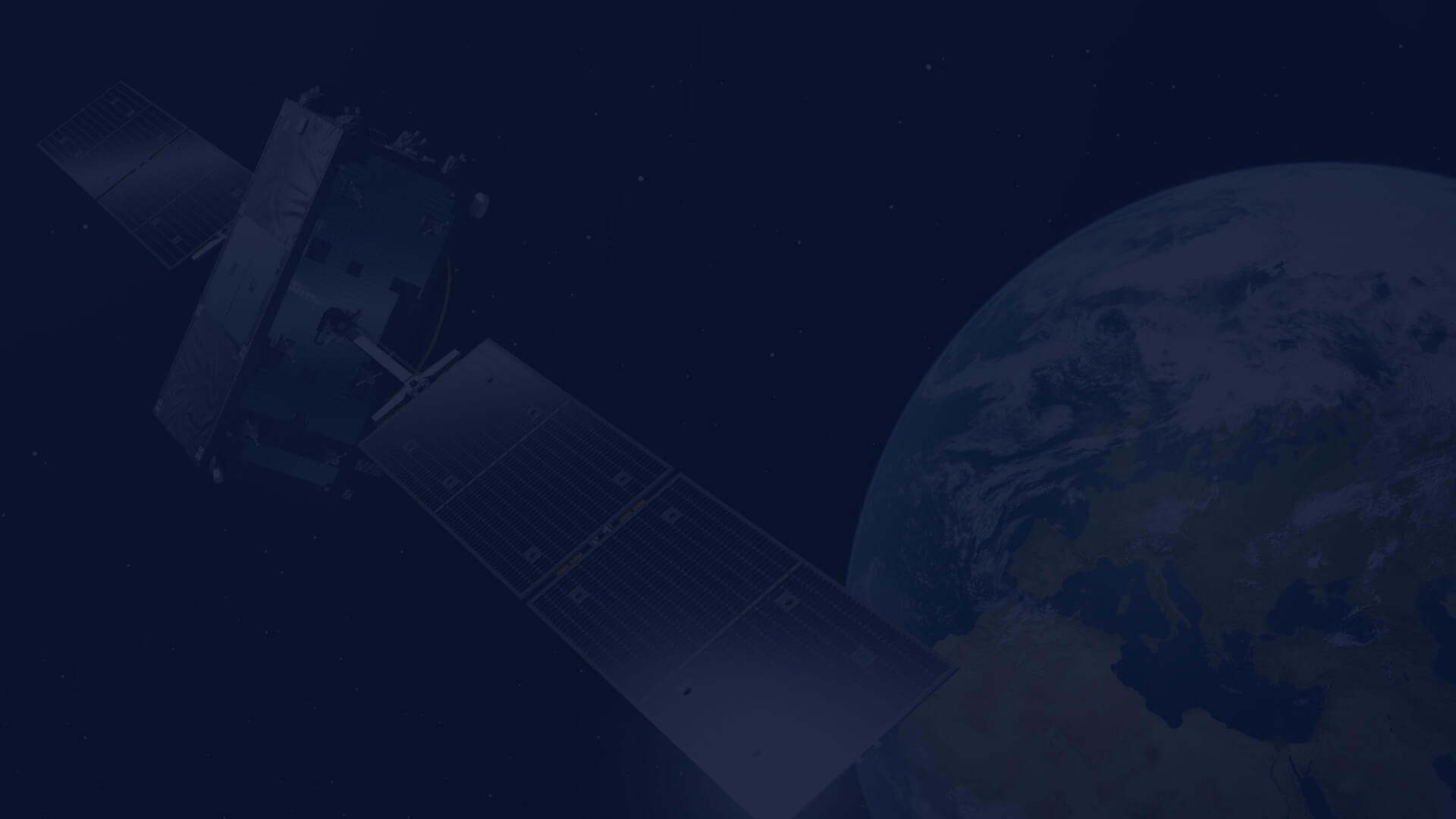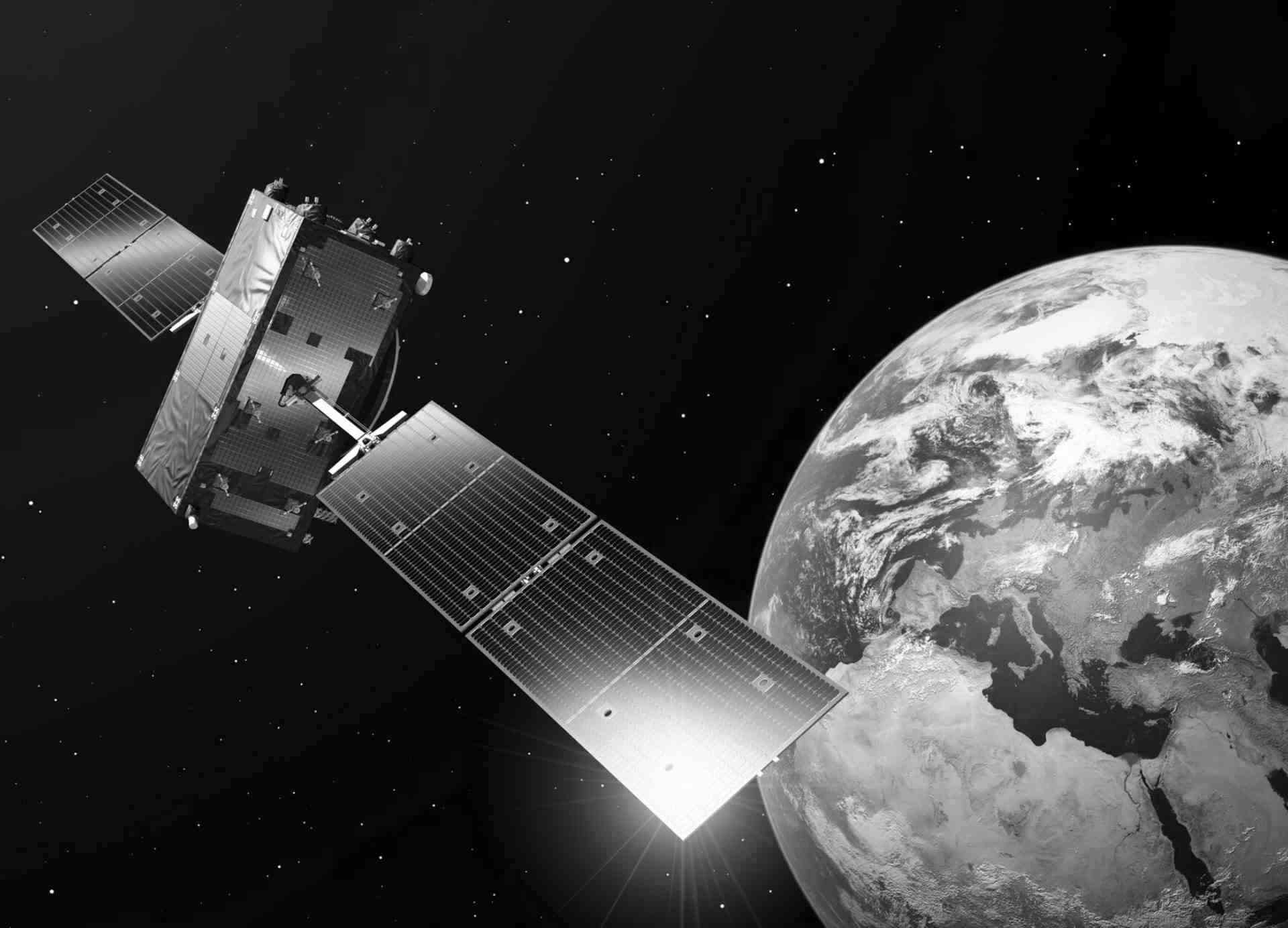SOLUTIONS FOR ATMOSPHERIC ANALYSIS
The air is transparent for human eye, nevertheless satellite sensors can see much more because they are constructed to register wavelengths inaccessible to our eyesight. Specific components of the air have a unique response in the available range of spectrum. That is why the size of cloud particles, PM2.5, CO2, SO, or O3 can all be measured.
CREODIAS provides access to atmospheric parameters and characteristics and offers tools that help to transform relevant information into key knowledge for environmental management. In particular, the platform gives access to the data from a flagship Copernicus satellite for atmospheric applications, Sentinel-5P, as well as Copernicus Atmosphere Monitoring Service (CAMS) products, and provides cloud computing environment for processing this data.
PICTURE OF ATMOSPHERE
Satellite observations give us an opportunity to see the Earth’s atmosphere from a truly unique perspective. CREODIAS provides data in various spatial and spectral ranges which are used for plenty of air applications. Satellite data in meteorology, climatology and environmental protection can be used for:
- pollution monitoring
- solar balance
- surface fluxes
- cloud cover
Life on our planet is possible thanks to a specific characteristic of our atmosphere. Each land cover element is determinate with geographical location and unique climate for that region. In order to properly understand vegetation, agriculture, pedosphere, and surface waters, it is crucial to have a knowledge about meteorological and climate factors.
ATMOSPHERIC CORRECTION
When satellite data is used to analyse the surface of the Earth’s elements, an atmosphere effect has to be eliminated. That is why, an atmospheric correction is one of the first steps in the satellite optical data processing.
CREODIAS platform gives access to both processing levels:
- L1 – before atmospheric correction
- L2 – after atmospheric correction
However, a huge part of remotely sensing research and analysis is dedicated not only to Earth surface but also the atmosphere itself. Earth Observation systems ‘take pictures’ in a specific range of electromagnetic spectrum. In order to see air elements, bands outside atmospheric windows are used. Each atmospheric component has a unique spectral key. Knowledge about its absorbance, transmittance and reflectance characteristic allows to create models and calculate the atmospheric component amount in specific time and space.
CLOUDS AND SHADOW MASKING
Atmosphere effect is removed from optical data in order to acquire a real reflectance of the Earth’s surface elements. Only that kind of data can be used in quantitative analysis, time comparison and statements of surface. Therefore, all visible and infrared data is atmospherically corrected and effect of clouds and their shadows are removed.
TROPOspheric Monitoring Instrument (TROPOMI), which is carried by Sentinel-5P, provides product dedicated to cloud properties, e.g.:
- cloud base height and pressure
- top height and pressure
- effective radiometric cloud fraction
- optical thickness
This data presents cloud type and properties which are indicators of processes inside of them. That kind of knowledge can be used in forecasting storms and hails in order to provide alerts for farmers and agriculture administration, or in providing key information for aviation.
The picture below shows the Sentinel-5P Top Pressure product from 1st March 2020 when the storm a had strong impact on central regions of France . The epicenter of the low-pressure system is visible through blue-green clouds centered over France.

SATELLITE DATA FOR ATMOSPHERIC SERVICES
The atmosphere surrounding the Earth is seemingly transparent but it is interactive and it influences every element of its surface. Those interactions can be measured with the help of satellite techniques.
One of the aims of Copernicus Atmospheric Monitoring Service (CAMS) is to establish an operational infrastructure for those measurements and make them available to everybody. Specific satellite and reference data are an input to advanced numerical modelling. Constantly created products like carbon fluxes, sun radiation, solar gases changes are key components helping to understand and fight climate issues. The results of advanced processing conducted in the frame of CAMS can be accessed on CREODIAS platform over S3 or NFS protocol.
INDICATORS OF AIR POLLUTION FROM SENTINEL-5P
Conducting an atmospheric research has become much easier and accurate thanks to the data acquired by Sentinel-5P . CREODIAS is one of the most convenient services to access those products. All archive SENTINEL-5P L1 data and Sentinel-5P L2 products are available. These are: Aerosol, Cloud, CO, HCHO, NO2, NP, O3, SO2. Monitoring of solar gases is important for the need of control, management and mitigation of their sources. It was perfectly visible during COVID19 pandemic when sudden closure of many human activities in urban centres caused an obvious decrease of solar gases in atmosphere.
Picture below shows Sentinel-5P L2 Nitrogen Dioxide product over Europe on 23rd of September 2020, just before lock down caused by COVID-19. North Italy is characterized by the biggest dark bronze spot. In general, the strong relation between urbanization intensity and NO2 content is visible.
Thematic data directly from satellite is not always complete. Products e.g. for air quality components (SO2, NO2, O3, PM2.5, PM10, etc) are generated only for clear sky condition, thus L2 level data, available on CREODIAS, can have ‘holes’ (black in the picture above). Further analysis and processing aim to complete coverage and provide users with maps containing daily, monthly or annual average and other statistics. Advanced products of reanalysis, taking into account ground measurements and numerical modelling, are available thanks to CAMS initiative, which is also provided by CREODIAS.
ATMOSPHERIC INTERACTIONS
CAMS and Sentinel-5P data can be sufficient for many commercial and scientific solutions. CREODIAS provides parallel access to other complementary products, giving comprehensive insight to a chosen topic. City traffic, industrial areas impact, mining or natural elements like volcanos leave their mark in the atmosphere. Solar radiation statistic together with land cover and relief make it possible to assess the best places for setting up solar panels.

CREODIAS GETS THE BEST
The multitude of satellite data applications and their benefits allow a return on investment intertwining utilities, techniques, methods and spectra used. The Copernicus programme is the answer to all the above needs and it assures a proper pace of development of both the economy and the environment. The goal is to get all the best from the available satellite systems by participating in developing new products and distributing them for free to a wider public. So this is what CREODIAS as one of the DIAS platforms provides.
Authors: Sylwia Nasiłowska (PhD), Project Manager at CloudFerro

